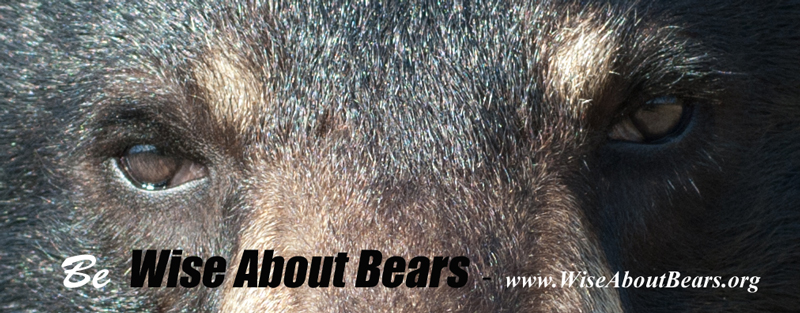Black Bear Ecology
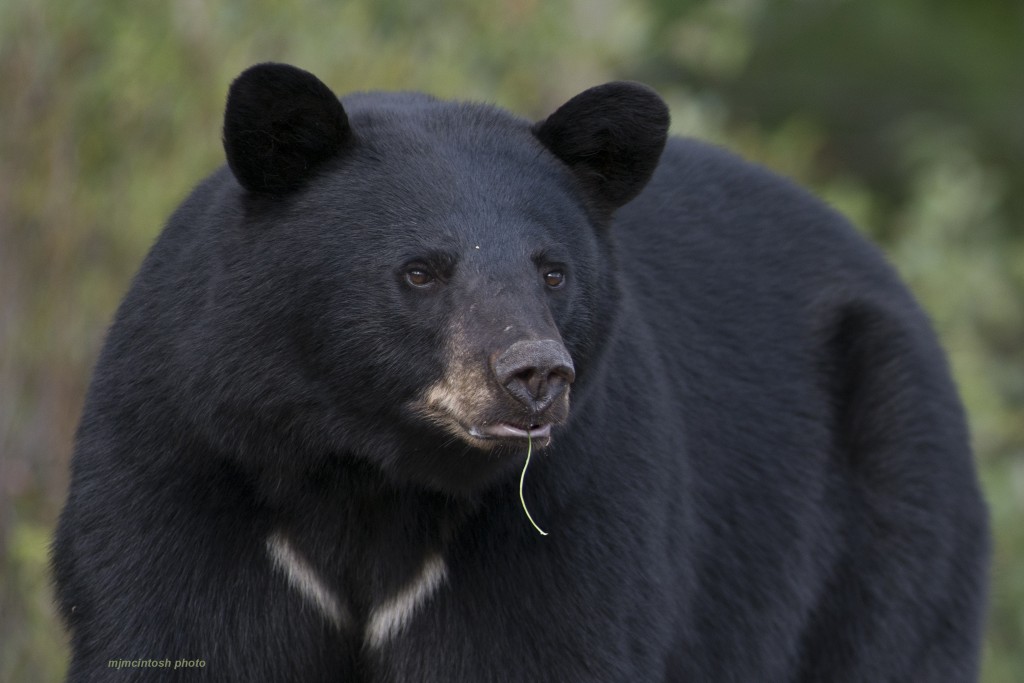 Black bears are large, heavily boned mammals. Adult males weigh from 120 kg to 300 kg (250 to 650 lbs.), and are 130 to 190 cm (4 to 6 feet) in length from the tip of the nose to the tip of the tail. Adult females are smaller, weighing from 45 to 180 kg (100 to 400 lbs.) and measuring 110 to 170 cm (31/2 to 51/2 feet) in length. Adult females reach maximum height and length at about five years of age. Adult males reach their maximum height and length when they are seven or eight years old.
Black bears are large, heavily boned mammals. Adult males weigh from 120 kg to 300 kg (250 to 650 lbs.), and are 130 to 190 cm (4 to 6 feet) in length from the tip of the nose to the tip of the tail. Adult females are smaller, weighing from 45 to 180 kg (100 to 400 lbs.) and measuring 110 to 170 cm (31/2 to 51/2 feet) in length. Adult females reach maximum height and length at about five years of age. Adult males reach their maximum height and length when they are seven or eight years old.
Body weights of adult bears vary dramatically throughout the year, and from one year to the next, depending on food availability. In Ontario, adult bears lose weight from the time they enter the den in the fall until well after they emerge from the den in spring. In early July, berries and other soft fruits start to become available and adult bears begin to gain weight.
When food is abundant, bears can gain up to 1 kg per day and can double their weight by fall. Most black bears in Ontario have a black coat colour though a small proportion (probably less than five percent) are dark brown to light brown.
Distinguishing Age and Sex Classes
The following are general descriptions of bear age and sex classes:
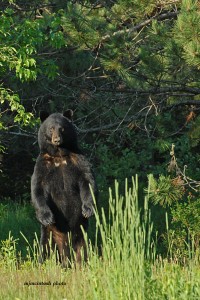 • Adult male bears have heavily muscled necks, shoulders and forelimbs, and have well developed muscle masses on top of their heads. Males also have broad snouts and their ears appear to be small because of the size of the head. If a male bear stands up and faces you, it is generally easy to see the penis. If you observe a male bear in a side view, long hairs hanging down from the penis can be seen in front of his thigh as he walks.
• Adult male bears have heavily muscled necks, shoulders and forelimbs, and have well developed muscle masses on top of their heads. Males also have broad snouts and their ears appear to be small because of the size of the head. If a male bear stands up and faces you, it is generally easy to see the penis. If you observe a male bear in a side view, long hairs hanging down from the penis can be seen in front of his thigh as he walks.
• Adult females are more slightly built than adult males; they have small necks and have smaller frames. If a female bear stands up and faces you, it is generally easy to see the nipples. In 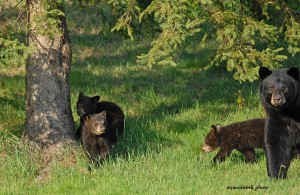 females, the long hairs that hang down from the vulva can be seen from behind as she walks.
females, the long hairs that hang down from the vulva can be seen from behind as she walks.
• Cubs of the year weigh about five kg by late June (the size of a small house cat). They grow to 15 to 30 kg (35 to 65 lbs.) by fall.
• Yearlings weigh 20 to 30 kg by late June (45 to 65 lbs., similar to a medium sized dog)
Seasonal Patterns
• Emergence from den: In most years black bears emerge from their winter dens from mid to late-April in central Ontario and between mid-April and early May in northern Ontario, though they may emerge sooner in early springs. Typically, adult males are the first to emerge, followed by sub-adult males and females, females accompanied by yearlings, and finally, females with cubs of the year. Adult males often wander considerably at this time and will feed on winter-killed moose and deer. Family groups, especially females with cubs of the year, often spend a week or longer in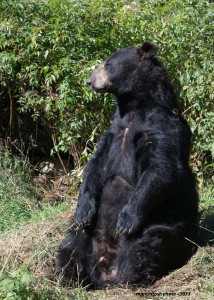 the immediate vicinity of the den after emerging in the spring.
the immediate vicinity of the den after emerging in the spring.
In the fall, pregnant females often plan for the following spring by choosing den sites that have large trees (more than 25 cm diameter) within 30 m of the den. These large trees are referred to as ‘sanctuary trees’ and are typically white pines in central Ontario and whitespruce or cedars in northern Ontario. Sanctuary trees function as escape cover for the young cubs in the period after the family emerges from the den, and adult females will cache their cubs in such trees while foraging.
• In early spring, black bears frequent openings in the forest and road edges where new green vegetation first appears. Later they may travel to streams to feed on spawning white suckers. Bears are also frequently found along roadsides where they bend down young trees to strip the new leaves from the branches. After aspen leaves emerge, black bears may be found high in mature trees feeding on the new leaves.
• Early summer: From den emergence to early July adult female black bears have a home range of about 20 to 25 square km. In spring and summer, black bears are generally active from about an hour before sunrise to about an hour after sunset. On hot afternoons bears are often found near water bodies.
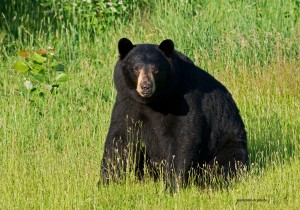 • Summer/Early Fall: In northern Ontario, the timing of seasonal movements by black bears is closely linked to the availability of blueberries. If fruits are available early the bears leave their home ranges early and, if fruits ripen late, the bears delay their foraging trips.Black bears appear to sample the blueberries available in their home range and then move to patches with more berries when fruits are mature. In most years bears begin to leave their spring range in early July and travel in search of blueberry patches. Blueberry patches are often found in regenerating jack pine plantations. Old burns are also visited. Bears studied near Chapleau travelled an average of about 50 km to good blueberry patches, though some females traveled as far as 100 km. In central Ontario (Canada) and parts of northwestern Ontario foraging trips by black bears are linked to the availability of acorns or beechnuts. Thus, seasonal movements in central
• Summer/Early Fall: In northern Ontario, the timing of seasonal movements by black bears is closely linked to the availability of blueberries. If fruits are available early the bears leave their home ranges early and, if fruits ripen late, the bears delay their foraging trips.Black bears appear to sample the blueberries available in their home range and then move to patches with more berries when fruits are mature. In most years bears begin to leave their spring range in early July and travel in search of blueberry patches. Blueberry patches are often found in regenerating jack pine plantations. Old burns are also visited. Bears studied near Chapleau travelled an average of about 50 km to good blueberry patches, though some females traveled as far as 100 km. In central Ontario (Canada) and parts of northwestern Ontario foraging trips by black bears are linked to the availability of acorns or beechnuts. Thus, seasonal movements in central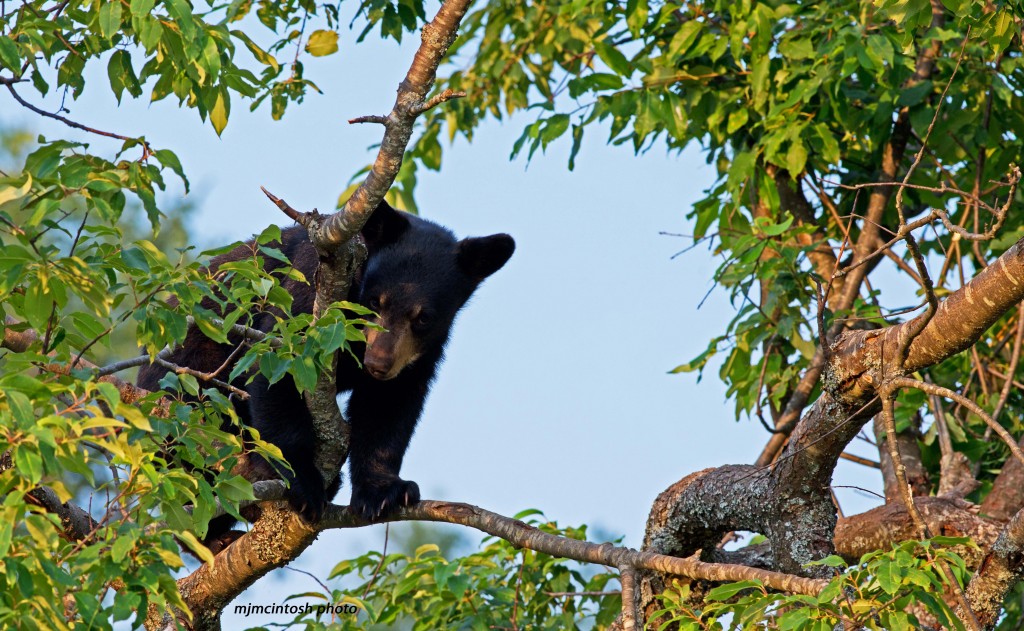 Ontario are more likely to occur in fall than in summer. In years when major food crops fail, black bears wander more widely and can remain away from their spring ranges for three to four months.
Ontario are more likely to occur in fall than in summer. In years when major food crops fail, black bears wander more widely and can remain away from their spring ranges for three to four months.
• By early September most bears in northern Ontario return to the home range used in spring and early summer and begin to search for a suitable den site. They feed on hazelnuts and mountain ash fruits if available, but also frequent road edges where they feed on fall growth of grasses and clovers.
• By mid-October most bears will have selected a site and be in the process of constructing a den, though they will continue to forage as long as food is available. As the days shorten, their daily cycle of activity slows and they are often not active until mid-morning. Pregnant females are the first bears to enter their dens, followed by females accompanied by cubs of the year, subadults, and finally adult males.
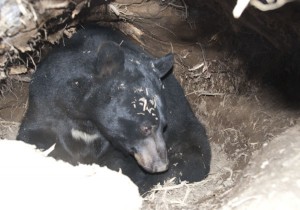 In most years all bears, except perhaps for adult males, will be in their dens by early November and will not leave their dens until the following spring. Actual timing of entry into dens appears to be influenced by a variety of environmental cues including availability of food, change in day length, and snow cover. Of these, the most important cue is food availability and in years when mountain ash fruit is available in northern Ontario, bears will enter their dens two to three weeks later than in other years.
In most years all bears, except perhaps for adult males, will be in their dens by early November and will not leave their dens until the following spring. Actual timing of entry into dens appears to be influenced by a variety of environmental cues including availability of food, change in day length, and snow cover. Of these, the most important cue is food availability and in years when mountain ash fruit is available in northern Ontario, bears will enter their dens two to three weeks later than in other years.
Credit – Ontario Ministry of Natural Resources – by L.J. Landriault, M.E. Obbard and W.J. Rettie
Photos – Mike McIntosh

